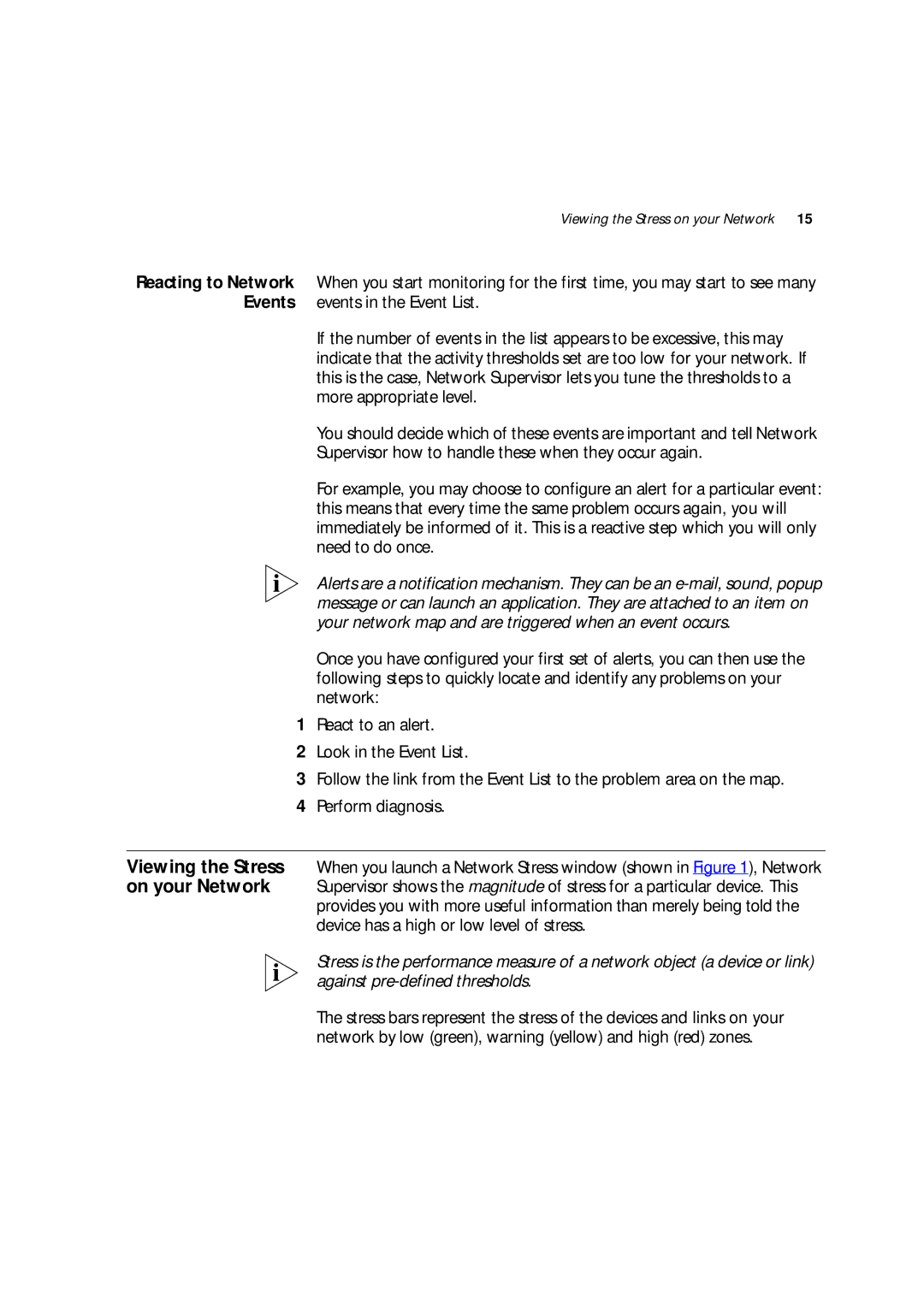
Viewing the Stress on your Network 15
Reacting to Network When you start monitoring for the first time, you may start to see many Events events in the Event List.
If the number of events in the list appears to be excessive, this may indicate that the activity thresholds set are too low for your network. If this is the case, Network Supervisor lets you tune the thresholds to a more appropriate level.
You should decide which of these events are important and tell Network
Supervisor how to handle these when they occur again.
For example, you may choose to configure an alert for a particular event: this means that every time the same problem occurs again, you will immediately be informed of it. This is a reactive step which you will only need to do once.
Alerts are a notification mechanism. They can be an
Once you have configured your first set of alerts, you can then use the following steps to quickly locate and identify any problems on your network:
1React to an alert.
2Look in the Event List.
3Follow the link from the Event List to the problem area on the map.
4Perform diagnosis.
Viewing the Stress When you launch a Network Stress window (shown in Figure 1), Network
on your Network Supervisor shows the magnitude of stress for a particular device. This provides you with more useful information than merely being told the device has a high or low level of stress.
Stress is the performance measure of a network object (a device or link) against
The stress bars represent the stress of the devices and links on your network by low (green), warning (yellow) and high (red) zones.
